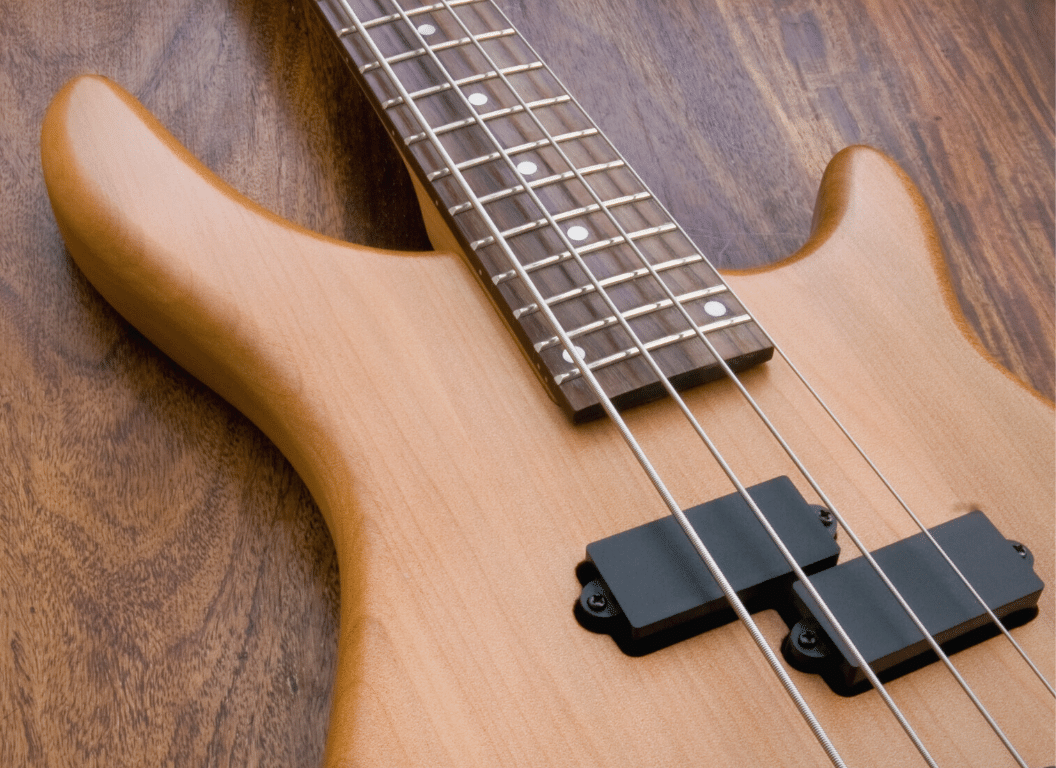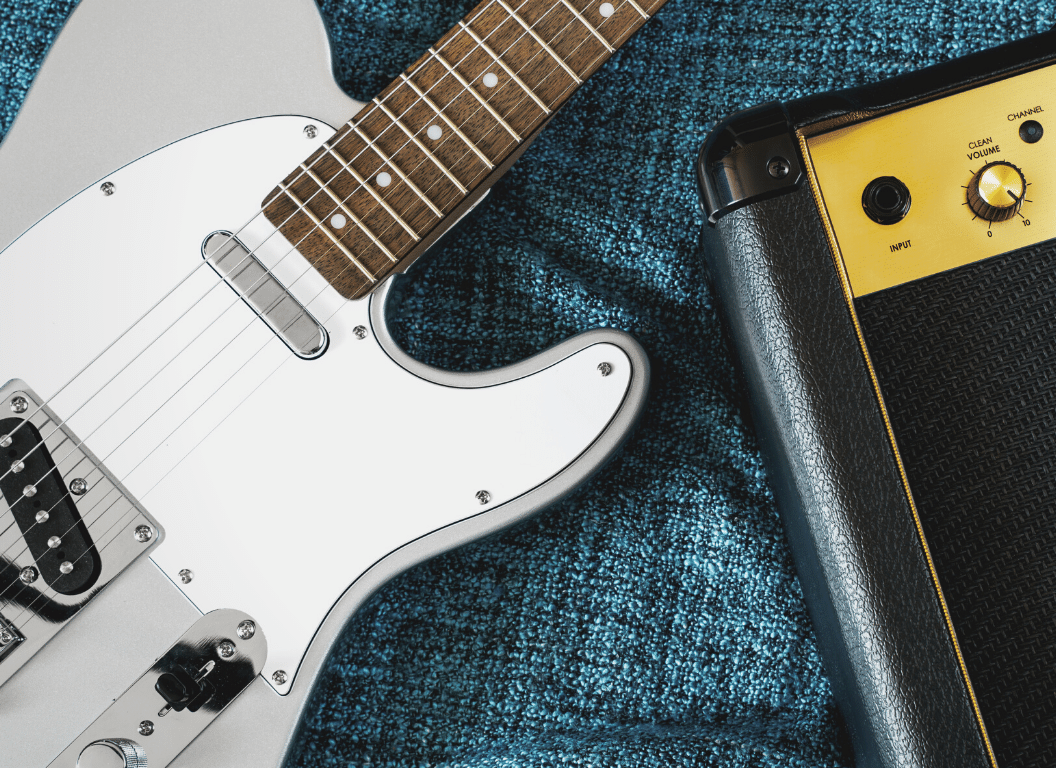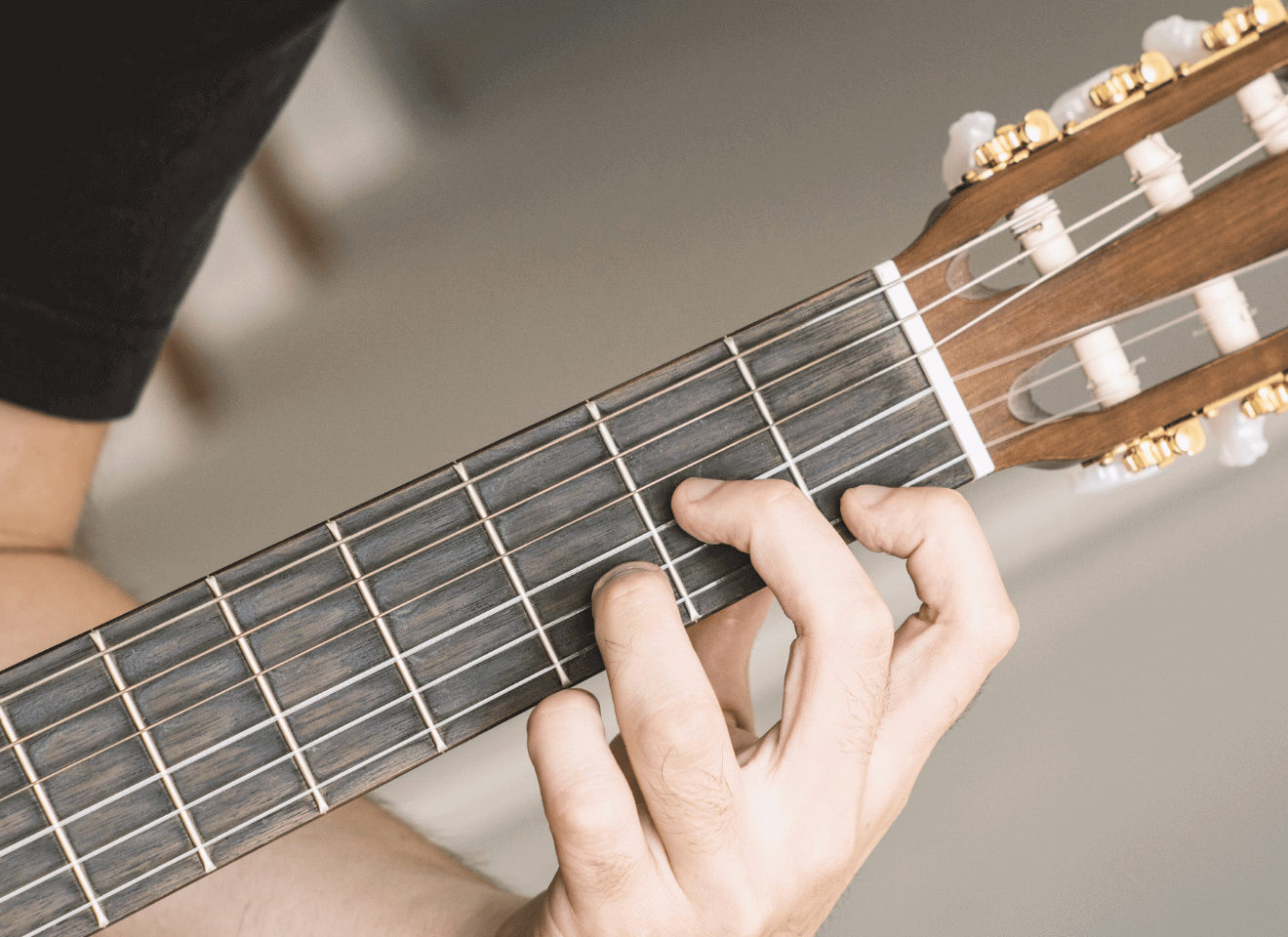Harmonics are the hidden treasures within any stringed instrument, offering a different tone and resonance often described as ethereal or bell-like.
Often associated primarily with instruments like the guitar and violin, they are seldom fully explored on the bass guitar.
Having said this, bass guitarists can significantly benefit from understanding and mastering the technique of playing harmonics.
This powerful tool expands the tonal palette, adding depth to a bassist’s overall sound.
This article aims to dive into the world of harmonics; discussing the theory, a step-by-step guide on how to produce them, and their potential creative use in bass guitar playing.
Whether already a seasoned pro or just picking up the bass, there are discoveries to be made by delving into this niche aspect of the instrument.
Table of Contents
- Can You Play Harmonics On A Bass Guitar?
- What Exactly Do They Mean by “Harmonics”?
- How To Produce Harmonics on a Bass Guitar?
- Bass Guitar Harmonics vs. Other Stringed Instruments
- Why You Should Incorporate Harmonics Into Your Bass Playing?
- Different Harmonic Notes on the Bass Guitar
- Tips and Tricks for Achieving Clear Harmonics on a Bass Guitar
- How and When To Use Harmonics Creatively in Your Bass Playing?
- Common Challenges When Playing Harmonics on a Bass Guitar
- The Bottom Line
Can You Play Harmonics On A Bass Guitar?
Yes, it is possible to play harmonics on a bass guitar. Harmonics are achieved by lightly touching a string at certain points without fully pressing it down, and then plucking or striking the string. These points, often at the 5th, 7th, and 12th frets, produce a high, bell-like tone known as a harmonic.
While harmonic playing is indeed plausible on your bass guitar, understanding the technique in depth is sure to add versatility to your repertoire.
In the following sections, we delve into the science behind harmonics, techniques for pinpoint precision, and even how famous musicians expertly employ this method.
A discussion on the integration of harmonics in various musical genres is also at hand.
This detailed explanation promises to enhance your theoretical knowledge and practical application.
What Exactly Do They Mean by “Harmonics”?
Before diving into the practical aspect of playing harmonics on a bass guitar, it is essential to first comprehend the underlying theory of harmonics.
The concept of harmonics, also known as overtones, traces back to the fundamental physics of sound.
Harmonics are natural vibrations that occur on a string, or any vibrating body, above a fundamental frequency, and contribute to the rich, complex tone of instruments.
When you pluck, hit, or bow a string on an instrument, the string vibrates at various speeds simultaneously, producing multiple sound waves.
Harmonics are natural vibrations that occur on a string, or any vibrating body, above a fundamental frequency, and contribute to the rich, complex tone of instruments.
This statement emphasizes that harmonics aren’t a unique sound, but rather a natural occurrence in the physics of sound.
Each of these sounding waves corresponds to a certain frequency and has a specific mode of vibration, an integral multiple of the fundamental frequency.
These multiples of the string’s fundamental pitch are what we refer to as harmonics.
Harmonics play a significant part in shaping the unique sound and character of each musical instrument.
They add depth, richness, and timbre to the primary note being played.
Although often subtle and unnoticed to the inexperienced ear, harmonics can add an extra touch of sophistication and intricacy to a piece of music when harnessed properly.
Harmonics add depth, richness, and timbre to the primary note being played.
This enriching role of harmonics emphasizes their significance in music production and especially in playing instruments such as the bass guitar.
On a bass guitar, harmonics can be produced in various ways, each resulting in unique, ethereal, and bell-like tones that add a new dimension to the instrument’s sound.
Understanding harmonics is not only crucial for the sake of theory but also has practical relevance in playing and composing music on a bass guitar.
With knowledge of harmonics, a bassist can manipulate the sound produced by the guitar, evoke a wide array of emotions, and explore new auditory landscapes.
Furthermore, mastering harmonics can open up a wealth of possibilities for expressiveness, creativity, and innovative playing techniques.
How To Produce Harmonics on a Bass Guitar?
Creating a harmonic on a bass guitar requires great precision and an understanding of physics.
Harmonics, by definition, are overtones of a fundamental note, and are produced when a string vibrates in two or more places.
Step 1: Positioning Your Finger
The first step is to lightly touch a string at the point where a harmonic exists.
It’s important to note that your finger should not press down on the string, but simply make contact with it.
The commonly used positions for playing harmonics are at the 12th, 7th, and 5th frets.
Remember that the placement of your finger is crucial.
A slight shift in the position can make the harmonic ring clear or not sound at all.
“The commonly used positions for playing harmonics are at the 12th, 7th, and 5th frets.”
This is because when your finger lightly touches the string at these specific positions, it divides the string length into halves, thirds and fourths respectively.
This results in different pitches of the harmonic notes.
Step 2: Picking the String
After positioning your finger, the next step is picking the string.
When picking a string to produce a harmonic, it’s essential to use a technique that allows the note to resonate.
A common method is to use a fingerstyle technique or a plectrum to pluck the string hard enough to make it vibrate, but not too hard that it mutes the harmonic sound.
Step 3: Let It Ring
The final step is to let the note ring.
After plucking, you should remove your finger from the string to give the harmonic the chance to ring.
This should be done as swiftly and lightly as possible without muting the sound.
This step is crucial because the duration and clarity of the harmonic note largely depends on how effectively you remove your finger from the fretboard after picking the string.
Bass Guitar Harmonics vs. Other Stringed Instruments
Bass guitar harmonics are unique in several ways compared to other string instruments.
A major difference lies in the range of the instrument and the tonal qualities of its harmonics.
Range of The Instrument
Bass guitars have lower pitches compared to other stringed instruments like the guitar, violin, or cello.
This also means the harmonics on a bass guitar are lower in pitch and have different harmonic implications.
Given its range, bass guitars can produce rich and deep sounding harmonics that cannot be achieved with other stringed instruments.
The Tonal Qualities
The tonal quality of bass guitar harmonics also varies greatly.
Due to the thick strings and longer neck, the harmonics produced by a bass guitar sound thicker and ring longer than those produced by higher-pitched string instruments.
The versatile tonal qualities of the bass guitar can be best described as “thick and resonant”.
They can be used effectively to add a unique layer of texture and color to the music.
“The harmonics produced by a bass guitar sound thicker and ring longer than those produced by higher-pitched string instruments.”
The extended sustain allows bassists to incorporate harmonics into bass solos and grooves in a unique way, making it a powerful tool for musical expression.
Why You Should Incorporate Harmonics Into Your Bass Playing?
Understanding the value of harmonics in your bass playing requires a dive into the depths of both musical theory and practical performance.
At the core of it, the inclusion of harmonics can hugely enhance the melodic capabilities of your bass guitar.
The Enhanced Melodic Capabilities
Harmonics, due to their higher pitches, can take the role of melodies in your bass lines.
This allows the bass guitar to transcend its traditional role as a rhythm and low-frequency instrument.
Incorporating harmonics can turn your bass into a compelling solo instrument, capable of producing melodies and textures usually associated with higher pitched instruments.
This unique aspect of harmonics brings a distinctive dimension to your music, setting it apart from traditional bass lines.
It allows you to experiment with musical layers, to create more complex, rich pieces.
The Exploitation of a Unique Sonic Texture
When used in the correct context, the ethereal, bell-like quality of harmonics can add an unparalleled sonic texture to your music.
Performing bass harmonics introduces a whole new range of sounds, which can give your music a distinctive edge.
Harmonics can provide a shimmering, ethereal texture to your music – something that cannot be achieved with regular bass notes.
This nuance can elevate your music to a unique level, setting the stage for an immersive listening experience.
It’s like the icing on the cake, providing that finishing touch that makes a piece of music holistically pleasing.
Technical Growth as a Bassist
Beyond the enrichment of your music, engaging with harmonics can also foster your technical growth as a bassist.
It not only introduces advanced skills but also broadens your expressiveness and control over the instrument.
By learning to play harmonics on your bass guitar, you will be forced to develop greater finger strength, precision, and dexterity, and to further your understanding of music theory.
This technical proficiency can translate into improved overall performance and can make you a versatile and accomplished bass player.
Adopting harmonics can, therefore, be a powerful tool in your journey towards masterful bass playing.
Different Harmonic Notes on the Bass Guitar
The harmonic notes produced by a bass guitar are unique and provide a wide range of sound possibilities.
Their beautiful and distinct tone can greatly enhance your bass playing.
Harmonic notes are produced by lightly touching the string at specific points, which are called the nodes, while striking the string.
Interestingly, these points coincide with the fractions of the string length: 1/2, 1/3, 1/4, etc.
In simple terms, when you touch the string at one of these points, you are creating a new endpoint for the string, determining the length of the string that vibrates and thus the pitch of the note that is heard.
The Fundamental and Its Harmonics
When you pluck an open string on your bass guitar, the sound heard is called the fundamental note or the first harmonic.
What’s interesting is that beyond the fundamental note, several other frequencies, or the harmonics, are also being produced, but they are much less audible.
These are the other harmonic notes that your bass guitar can produce.
The Second Harmonic
The next harmonic you can produce on your bass guitar is the second harmonic, also known as the first overtone.
This is produced by lightly touching the string at the midpoint while plucking the string.
The second harmonic, interestingly, is one octave higher than the fundamental note, meaning it is the same musical note but at a higher pitch.
Higher Order Harmonics
As we move on, each successive harmonic is produced by touching the string at a fraction of its length.
The third harmonic, for example, is produced at a point that is a third of the length of the string from the nut.
The frequencies of these higher order harmonics are a multiple of the frequency of the fundamental note.
The third harmonic, for example, is produced at a point that is a third of the length of the string from the nut.
This means that the pitch of the harmonic note increases as you progress to higher order harmonics.
Learning to accurately locate these points on the string and produce distinct harmonics is a critical skill for bass players who want to enrich their sound with harmonic notes.
By watching the embedded video, you’ll gain a better understanding of how to produce these harmonic notes.
You’ll also see demonstrations of the sounds these harmonics can produce, thereby enhancing your learning experience.
Tips and Tricks for Achieving Clear Harmonics on a Bass Guitar
Understanding how to produce clear harmonics on your bass guitar requires specific techniques and practices.
One of the firstly known ways to achieve this is focusing on the placement of your finger .
This usually occurs at the 12th, 7th, and 5th fret, as these are the points where you’re most likely to produce rich and clear harmonics.
Finger Placement and Technique
Firm but delicate touch is much needed to produce these magical tones from your bass guitar.
Evidently, you don’t press down on the fret like you do when you’re playing regular tones.
Instead, you lightly touch the string directly above the fret wire.
As soon as you pick the string with your right hand, your left hand quickly lifts off the string.
Keep this in mind, your fingers merely graze the string without applying any force.
This technique allows the string to vibrate at this harmonic node point and lets the harmonic ring out loud and clear.
Using the Right Gear
Attaining clear harmonics on a bass guitar also involves choosing the right gear.
For starters, the use of roundwound strings as opposed to flatwound strings is advised as roundwound strings often produce clearer harmonics.
Secondly, the use of guitar amplifiers with high-quality speakers is also beneficial.
You can eke out more clarity from your harmonics through proper equalization (EQ).
Boosting certain higher frequency ranges on your amp can help your harmonics stand out in the mix.
This is especially true in band scenarios where other frequencies from other instruments could drown out your harmonics.
Practicing Regularly
Incorporate harmonic techniques into your daily practice routines.
Playing harmonics accurately and consistently requires precision, control, and timing.
By practicing regularly, it becomes easier to execute this properly.
Mastering harmonics on a bass guitar is all about finesse, not force.
The more frequently you practice, the better you become at picking out harmonics and making them ring clearly.
This is not a skill that you can perfect overnight, but with patience and daily practice, one can get a decent grip on it.
How and When To Use Harmonics Creatively in Your Bass Playing?
In the world of bass guitar playing, harmonics open an avenue of creative expression that extends beyond the constraints of traditional playing and technique.
Harmonics are not just technical elements, they can also be incredibly musical and bring a new depth to your sound.
One of the unique benefits of harmonics is their sonic texture, which differs distinctly from regular notes, providing a bell-like or ghostly echo that can truly set your performance apart.
Creating Melodic Lines with Harmonics
One of the ways to creatively incorporate harmonics into your bass playing is by using them to create melodic lines.
Harmonics played on bass can cut through a mix far more effectively than regular notes, making them an ideal choice to play melodies in a band setting.
By experimenting with various harmonic nodes and sequences, you can create intricate and engaging melodies that bring a new dimension to your music.
Harmonics played on bass can cut through a mix far more effectively than regular notes, making them an ideal choice to play melodies in a band setting.
This statement emphasizes the melodic potential of harmonics in your playing.
Because of their unique tonal properties, they can effectively carve out a sonic space in a mix where your bass lines can shine.
Using Harmonics for Improvisation
Another creative use of harmonics in bass playing is improvisation.
Beyond just using the natural harmonics, there’s also plenty of room to experiment with artificial or pinch harmonics which can create a lot of dynamic and tonal variations in your solos or improvisations.
These are advanced techniques that can greatly expand your musical vocabulary on the bass guitar.
From this video, you will gain an understanding of how to produce harmonics on the bass as well as some examples of their musical application.
This can serve as a great starting point to inspire creativity in your own playing.
Add Color to Your Chords
Harmonics can also be used to add color to your chords.
By striking the strings at the fifth, seventh, or twelfth frets, you can produce harmonics that correspond to different overtones, adding a rich sonic layer to your chord progressions.
With enough practice and experimentation, you can create your own harmonic chord shapes that lend a distinct character to your sound.
By incorporating harmonics into your playing, you unlock a new world of sonic possibilities that allows you to articulate a distinct voice on your instrument.
By incorporating harmonics into your playing, you unlock a new world of sonic possibilities that allows you to articulate a distinct voice on your instrument.
This powerful technique is not only unique to the bass guitar, but it also adds a fresh and ear-catching element to your playing that will undeniably set you apart from other bass players.
Common Challenges When Playing Harmonics on a Bass Guitar
Playing harmonics on a bass guitar can present a unique set of challenges as it is a delicate technique that relies on precise positioning and a sensitive touch.
However, once overcome, these challenges can provide the opportunity for a more dynamic and expressive performance.
Issue of Finger Placement and Pressure
The first major challenge bass guitarists often encounter when trying to play harmonics is correct finger placement and pressure on the strings.
Remember, to play a harmonic on a string, you do not press down as you would to play a note; instead, you touch the string lightly at precise nodes.
The nodes are located at certain divisions of the string, such as the middle point, one third, one fourth, and so on.
It’s worth mentioning that harmonics can be stubborn and elusive to capture.
A slight variation in placement or pressure can mute the harmonic or produce an undesirable pitch.
Mastering the art of playing harmonics on a bass guitar is largely about finding the right balance of finger placement and pressure.
By consistently practicing harmonic techniques and being patient with the process, you can gradually develop the necessary ‘feel’ for harmonics.
Difficulty in Isolating Harmonics
Another common issue is the difficulty of isolating harmonics, especially in the context of a busy, rhythmic bass line.
A harmonic should ring clear and free, without any obstruction from other strings or fret buzz.
This requires good control over string muting, only allowing the desired strings to vibrate.
Sometimes, you might need to use both hands to mute other strings.
Be aware that unnecessary string vibrations can muddy your harmonic sound.
Play each harmonic with precision and focus, carefully lifting your finger immediately after plucking the string.
Proper string muting technique facilitates clean and isolated harmonics which adds to the clarity of your overall tone.
Maintaining control over your instrument and training yourself to mute effectively can go a long way in ensuring your harmonics sound as clear and resonant as they should.
By watching this particular YouTube video, you will get practical demonstration of harmonic techniques which can provide a more nuanced understanding to aid your practice.
Not just that, but this video also provides exercises to get you started on your journey of mastering harmonics on your bass guitar.
Challenges in Consistency
Another common obstacle that bassists face when playing harmonics is consistency.
It is not uncommon to hit a perfect harmonic one moment, only to find it elusive the next.
Consistency is key when it comes to playing harmonics, and it is something that usually improves over time as you develop muscle memory through frequent practice.
Consistency in playing harmonics is achieved through practice and muscle memory.
A tried and true tip is to slow down and pay close attention to your actions.
Identifying what works and consistent reproduction of those actions paves the way for smooth, effortless harmonics.
Apart from these, there could be other smaller, more individual challenges.
But remember, overcoming each challenge, no matter how small, brings you one step closer to mastering harmonics on your bass guitar.
Practice patience and persistence and you’ll find the results to be worth the effort.
The Bottom Line
Understanding and mastering harmonics in bass guitar playing can greatly enhance your musical versatility and generate a richer, more complex sound.
Although it may differ from other stringed instruments, it presents a unique opportunity for you to incorporate different harmonic notes and distinguish your style.
Furthermore, experimenting with false harmonics can take your bass playing to advanced levels.
Despite the possible challenges, there are numerous tips and tricks that can aid in achieving clear harmonics.
Ultimately, the creative use of harmonics in your bass playing can make a profound difference in your music, opening up a vast realm of sonic possibilities waiting to be explored.

More than 10 years of experience playing and writing about guitars! When not writing, I can be found strumming away some Johnny Cash tunes. Favorite all time guitar is the Gibson Les Paul. #TeamGibson




